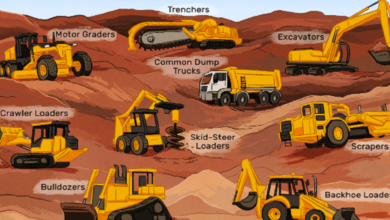What You Need To Know About Visual Effects (VFX)
What You Need To Know About Visual Effects (VFX)

Have you ever questioned how a situation that would normally be practically impossible might be portrayed convincingly in a movie? For instance, some movies depict things that are no longer present on Earth, such as ghosts, pirate ships, and dinosaurs(Logo Design For Your Company).
We would want to express our gratitude to all of the visual effects artists and supervisors who worked so diligently to create these effects (VFX). With the use of computer graphics, mystical and fanciful events may come to life in films, television shows, advertising, and even video games. These visual artists use visual effects to convey the appearance of realism.
VFX: What is it? We’ll learn more about VFX in this article.
What are Visual Effects?
Visual effects are sometimes known as visual FX or VFX. Images, films, and other visual components may be augmented for live-action filming through a technique known as visual effects (VFX).
These effects enable the incorporation of realistic-appearing settings, characters, and events that for one reason or another, could not be captured during live-action filming. For example, the scenes can be hard to digest in real life or too dangerous to be captured on camera.
Visual effects, often known as VFX, are fundamentally the creation of computer graphics for the purpose of manipulating or enhancing real-world footage that has been captured on camera.
In order to create situations that appear realistic but would be unsafe, expensive, inconvenient, time-consuming, or impossible to record on film, visual effects utilize the merging of video camera footage with created graphics.
Visual effects are frequently used in television commercials, broadcast shows, architecture, advertising, design, and other media, in addition to major motion pictures. In fact, a logo design for your company can also be a visual effect.
People opt for VFX may be because it requires the ideal fusion of creativity, modern technology, and narrative telling. Another reason can be that you enjoy watching movies and wish to hang out with movie stars on the set. Maybe you’re looking for a job that will let you work remotely from home or perhaps travel the world.
Or perhaps it’s because you enjoy creating things with your hands, a computer, and drawings. There are dozens of potential career routes accessible to you across many sectors, and there is a multitude of reasons why you would choose to work in visual effects.
Important Skills required to become a VFX artist
In the field of visual effects, there are several work opportunities. There are undoubtedly certain crucial abilities you should concentrate on throughout your first training if you’re interested in the more creative and technical professions.
The talents we’re referring to have nothing to do with technology or software. When you truly get into your training, those will follow. However, having a strong foundation in the following abilities will benefit you in the long run:
- Visual Aesthetics
- Sculpture & Anatomy
- Composition and light
- Drawing
- Mechanics and Movement
- Passion for Film
- Communication skills
- Real-world observation
- Photography
Why do we need to add VFX to our design and videos?
We can observe that in recent decades, the usage of visual effects in movies and television has multiplied. Similar days, these visual effects may be found in the daily rom-com as well as in sci-fi, action, and fantasy movies.
Visual effects play a significant role in the storytelling process that businesses employ to market their brand or products. Companies may earn greater trust from the audience by using convincing visual effects rather than a well-written narrative.
By allowing you more creative freedom and bringing your material to life, visual effects may help your video stand out.
Additionally, these effects could strengthen the overall effects of the mood and images. The use of visual effects may also assist the video’s narration in conveying the intended message to the viewer.
Types of VFX
Computer-generated imagery (CGI), compositing, motion capture, matte paintings, and animations are a few examples of VFX.
-
Computer-generated visual effects (CGI VFX)
CGI is a form of visual effect that is used often, and many people outside of the movie business refer to all visual effects as CGI VFX.
Computer-generated imagery, or CGI for short, is defined as images created entirely by computers. These computer-generated images are used in other kinds of visual effects to improve or integrate live-action videos.
Though often 3D, computer-generated images may also be 2D or 3D. The most typical use of this kind of visual effect is the creation of mythological or extinct animals like dinosaurs and dragons. CGI can also be utilized in subtler ways, such as to make aging performers look younger.
-
Compositing
Have you ever wondered why actors sometimes perform in front of a blue or green screen to make it appear as though they are in a scripted setting? Although we never witness a sequence in which these performers appear against a green or blue background after the film has been released.
Using the compositing effect, this green screen or blue screen backdrop is really transformed into the picture that is intended to be in the tale viewed by the audience.
In the process of digital compositing, visual effects from many locations are combined to give the impression that they are in the same location.
One of the most common and well-known compositing methods is “Chroma Keying.” In actuality, we could have encountered or employed this tactic.
Using compositing software, a blue or green screen that will be changed with other items or with a new backdrop picture is used to create this visual effect.
-
Motion capture
Motion capture, often known as mocap, is derived from the antiquated process of stroboscopic, in which artists use live-action footage to produce more lifelike CGI.
An actor’s movements are digitally captured and then converted to a 3D computer-generated model in a process known as motion capture. This process, often known as “performance capture,” also caught the actor’s facial emotions.
The performer is placed in a motion-capture suit with markers that cameras can monitor in order to create motion capture in the visual effects business.
-
Animation
Animation is the process of turning still images into moving ones. Traditionally, this effect was hand-drawn, but nowadays, CGI components are frequently employed to create animation sequences.
One of the most well-known types of animation is stop-motion. Stop-motion movies include “Wallace and Gromit” and “Wes Anderson’s Isle of Dogs.”
The 3D animation created by Superpixel to highlight the ease of online buying with Redmart’s online shopping app is another stunning illustration. In this project, Superpixel gave everyday supermarket items a life of their own by creating a total of 6 x 10-second movies of various things going through the hardship of regular outside shopping.
Final Word
The need for visual effects artists is constantly strong. Netflix is here to stay, movies aren’t slowing down, and advertising firms are always attempting to break the rules of advertising campaigns. Visual effects artists are also in greater demand at architecture firms, product design studios, and tech startups.




